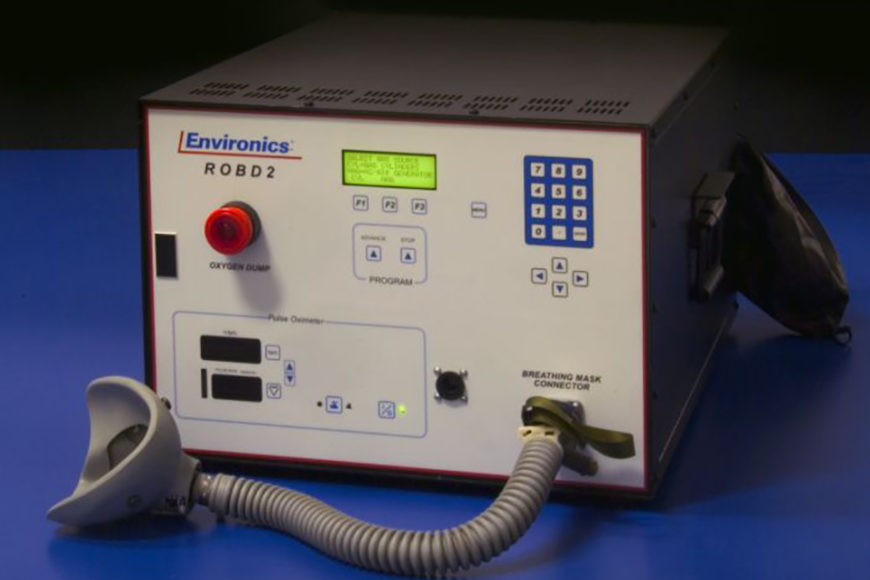
Thermal mass flow controllers (MFCs) are often used to control the flow of a gas species based on the dissipation of thermal energy. This is achieved by integrating a sensor tube into the flow system which is equipped with up and downstream temperature sensors. The gas absorbs heat as it enters the component and loses heat on its way out. MFCs are engineered to calculate the differential temperature in the tube and generate an electrical signal for additional instrumentation. This technology is central to numerous gas blending technologies and is broadly used in a range of application areas.
This blog post will explore the use of MFCs for hypoxia training in more detail.
What is Hypoxia?
Hypoxia is a form of oxygen privation that is typically caused by a reduction in the amount of breathable oxygen in the air and regularly impacts individuals at higher altitudes. Mountain climbers, pilots, and aircraft passengers routinely experience symptoms of oxygen deprivation. These typically arise as respiratory stress but can escalate to include headaches, vomiting, and confusion. Although unlikely to represent a risk to life in of itself, the symptoms of hypoxia can limit an individual’s normal functions which can have severe consequences for aircrews and mountain climbers.
MFCs for Reduced Oxygen Training
The US military employs the Reduced Oxygen Breathing Device (ROBD) to train pilots and aircrew for hypoxic conditions. Aerospace physiologists are concerned with the medical implications facing aircraft personnel in the unlikely event that oxygen supply systems fail.
Hypoxia often causes confusion which makes it difficult for individuals to recognize their own symptoms and perform corrective actions. Reduced oxygen training aims to simulate hypoxic conditions, so crew members can experience them first-hand. This was traditionally achieved using low-pressure chambers, but the MFC-containing system has sufficiently streamlined the process to offer a more cost-effective method of training. Pilots can return to duty immediately after training, thus reducing downtime.
The Reduced Oxygen Breathing Device 2 (ROBD2) from Environics is equipped with MFCs which can reliably and repeatedly mix ambient air and nitrogen to produce a gas blend equivalent to altitudes of up to 40,000 feet at sea level. Trainees can experience simulated flight conditions with significantly reduced medical risks compared to low-pressure training. In fact, the US Navy has forgone the use of low-pressure chambers in favor of the ROBD for repeat hypoxia training.
The ROBD has a variety of safety features built in to assure the unit is operational prior to use. These include verifying the accuracy of the MFCs and the oxygen sensor. In addition, the units include an emergency dump switch for immediately supplying 100% oxygen to the subject’s mask as needed during training.
The ROBD also can include two optional features that simulate possible aircraft failures. The first simulates a loss in air flow to the mask through reduced flow from the MFCs. The second simulates hyperoxic conditions, where the percentage of oxygen is above normal. These added features expand the functionality of the ROBD and allow for streamlined pilot training and hypoxia and hyperoxia research.
MFC-Based Systems from Environics
Environics specializes in computerized gas flow devices and software for a broad range of application areas where precise gas mixing and gas diluting is required.
If you would like any more information about our gas mixing and dilution systems, please do not hesitate to contact us directly.

